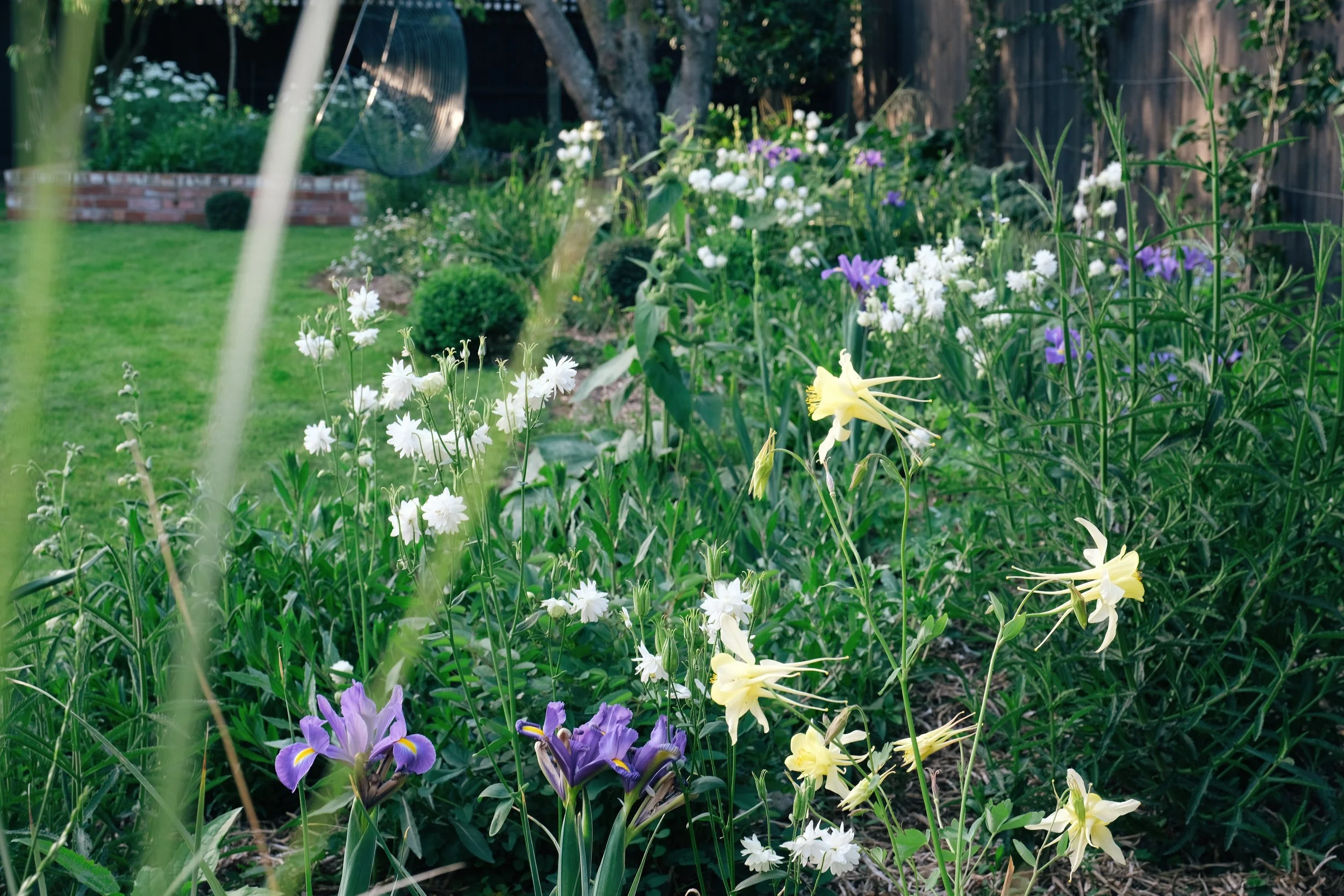Aquilegia - low fuss flowers that will grow in tough spots!
/By late November, we have all enjoyed a month or so of the fantastical display of aquilegia, nodding their pretty heads above the green mounds of summer plants just getting into gear.
This was the first year that I made an intentional planting of new varieties beyond my resident, self-seeding common aquilegia that sporadically throws up deep purple, vintage pinks and white flowers.
Broadly referred to as granny’s bonnet, columbine or European crowfoot, depending on where in the world you hail from, the term aquilegia will safely bridge any local monikers. Part of the buttercup family, they are a native of Europe and have spread and naturalised through North America and Central Asia.
By nature, aquilegia are a short-lived perennial of just two-three years but are accomplished self-seeders, meaning once you have them, they’re likely to hang around. They are the plants that will seed into even your worst rubbly areas and bring joy to tricky, partially shaded spots.
In saying this, when self-seeding, some hybrid varieties may revert to the common species mentioned above or change colour, so pluck out any new plants that aren’t presenting as you want. This is due to the ease with which they cross-pollinate, and if you want to protect your favourite stock, it’s best to remove varieties of those that you don’t want to dominate.
In my experience, their rewarding show and uncomplicated nature make up for their late-season tattiness, often tinged with powdery mildew. When this time comes, I generally give the entire clump a strong and low cutback (putting infected leaves and spent stems in the green bin – not compost to avoid spread) and am rewarded with new foliage to fill gaps going to autumn.
While there is a rainbow of colours and a complex array of bloom structure within this family, they all shoot their blooms up on long straight stems from clumps of softly lobed leaves. As most grow to waist height, they are best planted in the middle of a bed.
I have found their fanned, fern-like foliage to be fantastic for picking as much as the flowers themselves. You just want to avoid that soft, floppy fresh growth before nibbling at them with secateurs.
Aquilegia vulgaris ‘Clementine White’
This year, I was excited to see the results of dotting a very pretty white variety through my new beds, gratefully given to me by Anita Todd of Saddlewood garden in Hawarden, where it can be spotted over most fences in the region.
Aquilegia vulgaris ‘Clementine White’ feels very fancy with its clustered, compact buds, which open to lush double blooms with a distinct concertina look.
To complement these, I intermingled a primrose yellow variety of Aquilegia caerulea that offers giant, long-spurred blooms. Combined with the intense blue of Iris hollandica ‘Blue Magic’ and the budding balls of Phlomis russeliana, the vision came together pretty well for its first season.
Aquilegia, japanese iris and phlomis baubles give the late spring show as the summer flowering perennials bolster up.
On my mission of discovery and research to learn more about the aquilegia world, I have met many beautiful subjects of it this spring.
Most were found in other people’s gardens, and for many, I couldn’t uncover their exact identification. Nonetheless, I couldn’t deny the scope and diversity of display that they offered.
I was intrigued to see dark-stemmed specimens with petals ranging from ombre sunset to the blackest of blues. Showstoppers included circus-like, bi-coloured giants that, as my friend pointed out, resembled flying fish across a planting.
Some colour combinations treaded on gaudy, while others were achingly delicate. What couldn’t be denied was their domination of the late spring show and the reminder that curating a garden for the seasons offers an ongoing, enjoyable show.
This is an expanded version of the article featured in my Stuff ‘Homed’ gardening column for beginners , The Press, Dominion Post and other regional papers on November 24th 2022
All words and images are my own, unless otherwise credited.










